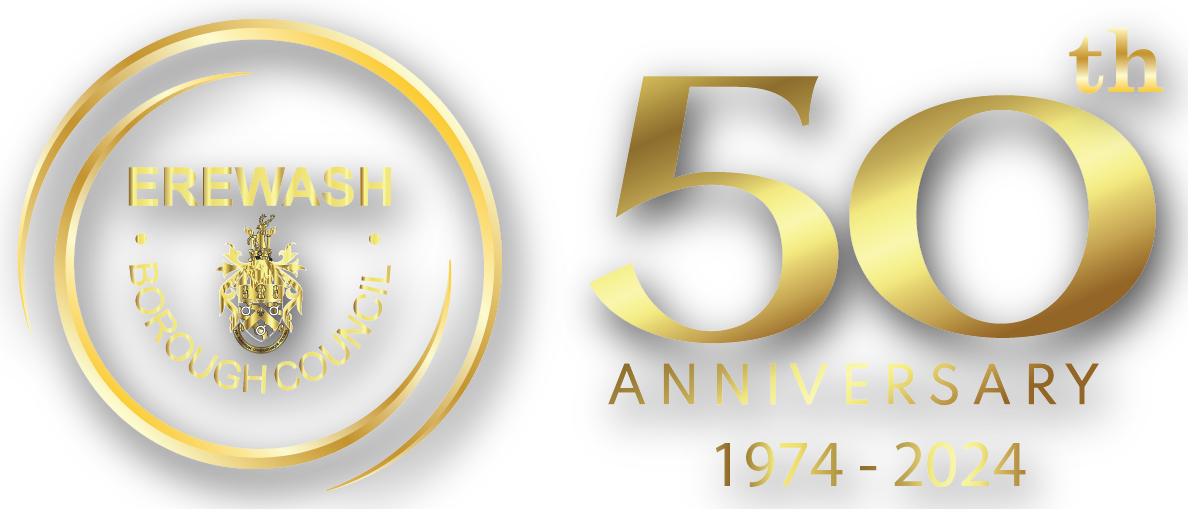Wildflower and rewilding sites in Erewash
A greener borough, it’s in our nature

Seven Crimson clover plants were discovered in an uncut wildflower area by a member of the Long Eaton and District U3A Plant Study Group. It is believed to be the Trifolium Incarnatum species, which the Derbyshire Flora website states is rare.
The plants can be seen at the following What Three Words location what3words.com/myself.thigh.glue.
Wildflowers attract a wide variety of species, from the insects that lay their eggs on their plants and the grasshoppers that live among them, to the birds and small mammals that in turn feed on them.
Areas will be sown with wildflower seeds at the following sites in Erewash:
Ilkeston
Outside Toll Bar House
Victoria Park - near the smaller car park
Tesco traffic island
Long Eaton
Wilsthorpe Road Island
West Park, by the Butterfly gates
About the wildflowers
The seeds used at Tesco island and Wilsthorpe Island include 24 annual flower species. These create a splash of colour and are a food source for bees, butterflies and other pollinators.
Flowers include poppies, petunias, cornflower and baby blue eyes. The mix of seeds contains 78% of the flower species included are recommended by the Royal Horticultural Society (RHS) as ‘Perfect for Pollinators’.
More about our rewilding sites
Rewilding is an ecological restoration approach focused on restoring and reintroducing natural processes and biodiversity to degraded ecosystems.
Wild about Erewash aims to benefit people’s health and wellbeing, improve biodiversity in the borough, and reduce the council’s carbon footprint.
Residents will soon be able to look out for information boards at these eight rewilding sites:
- Petersham open space, Long Eaton
- Bare Lane, Ockbrook
- Dallimore Road, Kirk Hallam
- Wyndale Drive, Kirk Hallam
- Barling Lagoon, Ilkeston
- Beauvale Drive, Cotmanhay
- Granby Park, Cotmanhay
- Larklands, Ilkeston
Play areas on all sites will be mown around to allow around five to six feet of separation from the long grass.
Information boards are being placed at these sites as the council monitors how the new green strategy impacts local wildlife such as bees, butterflies and hedgehogs.
Key components of rewilding include:
In Erewash the emphasis will be on:
- Improving health and wellbeing;
- Improving biodiversity;
- Reducing our carbon footprint.
Find out more on the Wild about Erewash page.
In general, rewilding can also be beneficial for:
Corridor Creation: Creating wildlife corridors or connectivity between fragmented habitats to facilitate the movement of species and enhance genetic diversity.
Ecological Processes: Allowing natural ecological processes, such as predation, competition, and disturbance regimes, to operate without human interference.
Community Engagement: Involving local communities and stakeholders in rewilding projects to ensure their support and participation in conservation efforts.
Habitat Restoration: Restoring habitats to their natural state by reintroducing native plant species, removing invasive species, and restoring natural water flows.
Species Reintroduction: Reintroducing native species, such as apex predators, herbivores, and keystone species, to their historical ranges to restore ecological balance and natural processes.
Other areas
The following areas will be maintained as they were previously:
- Sports pitches
- All cemeteries and churchyards
- Noskwith play area in Ilkeston.
- Areas surrounding Chalons Way in Ilkeston.
- Sawley Community Centre.
- Belvoir Close, Breaston.
- Long Eaton Library.
- Waverley Street, Long Eaton.
- Town centre car parks.
- The grounds of the borough’s leisure centres.
- Erewash Museum grounds, Ilkeston.
- Ilkeston Town Hall and Long Eaton Town Hall.


